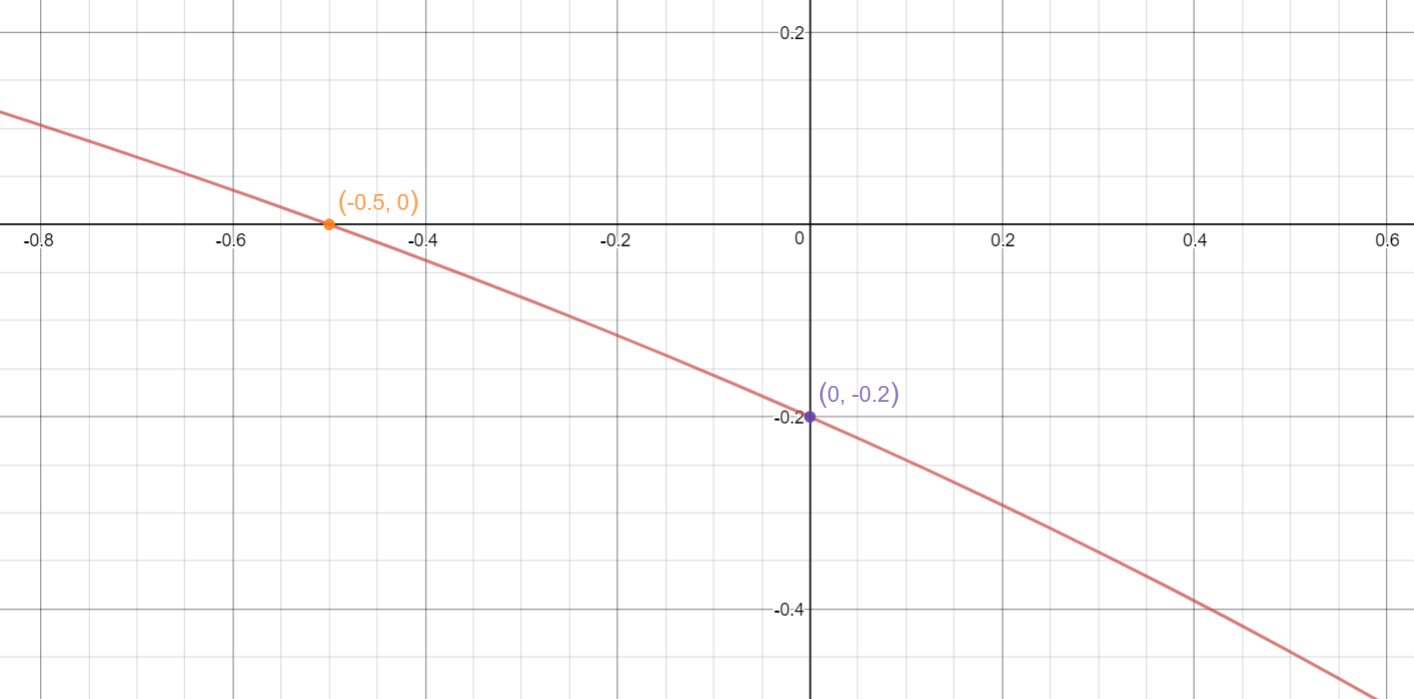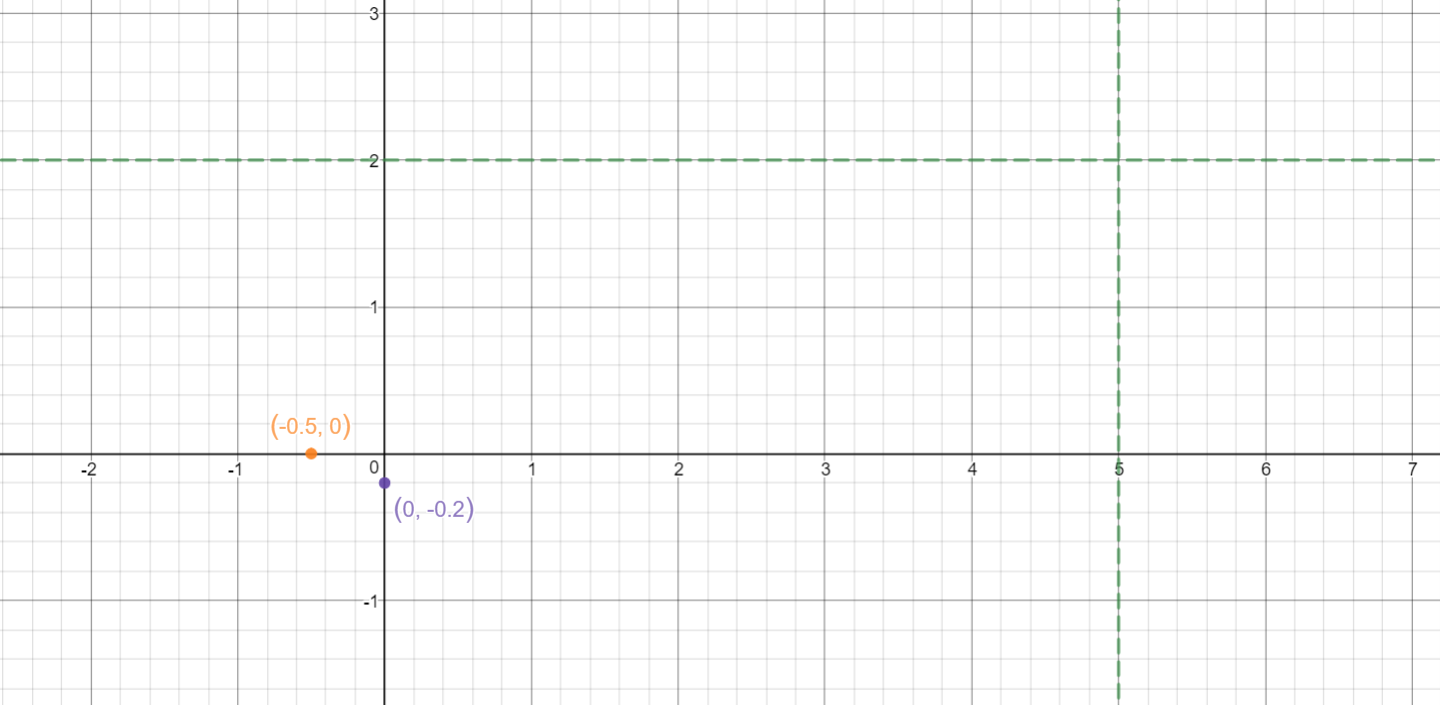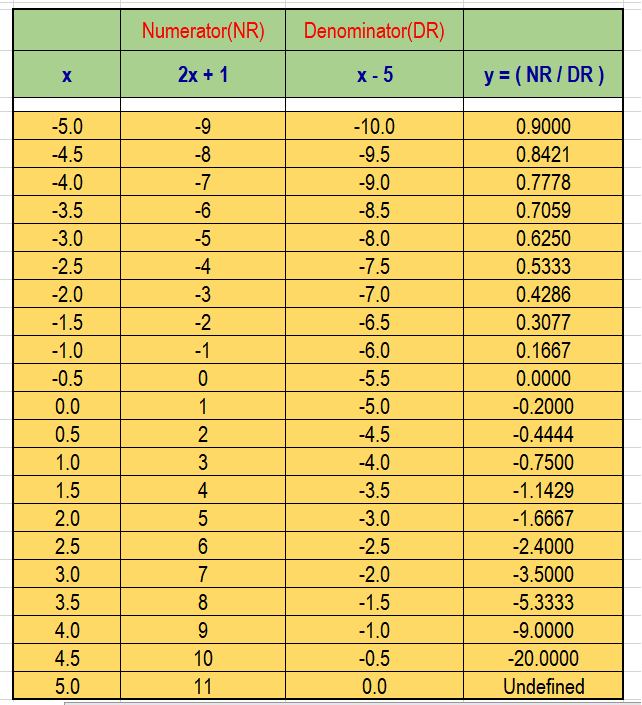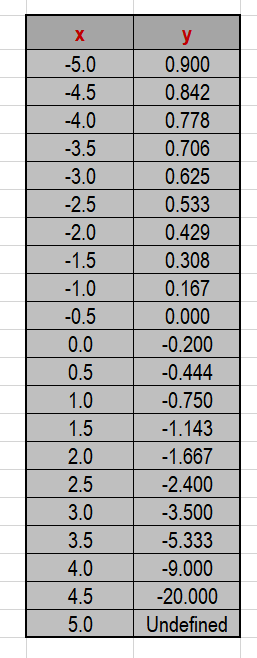How do you graph #y =(2x + 1)/(x-5)#?
1 Answer
Please read the explanation.
Explanation:
Given:
Rational function :
Find both
x-intercept:
Set
y-intercept:
Set

Both x and y intercepts are plotted in the graph above.
Find Horizontal and Vertical Asymptotes
Vertical asymptotes are generated by the ZEROS of the denominator.
Horizontal asymptoes describe the behavior of the graph as the input values get larger or smaller.
Vertical asymptote:
Figure out what makes the denominator equal to zero.
Make sure that the numerator does not become zero for the same value.
Vertical asymptote is at
Horizontal asymptote:
Numerator =
Highest degree in both numerator and denominator is
Horizontal asymptote is at
You can view the asymptotes in the graph below:

Generate a data table as follows:

Consider the columns (first and the last):

Graph:

Hope you find this useful.

